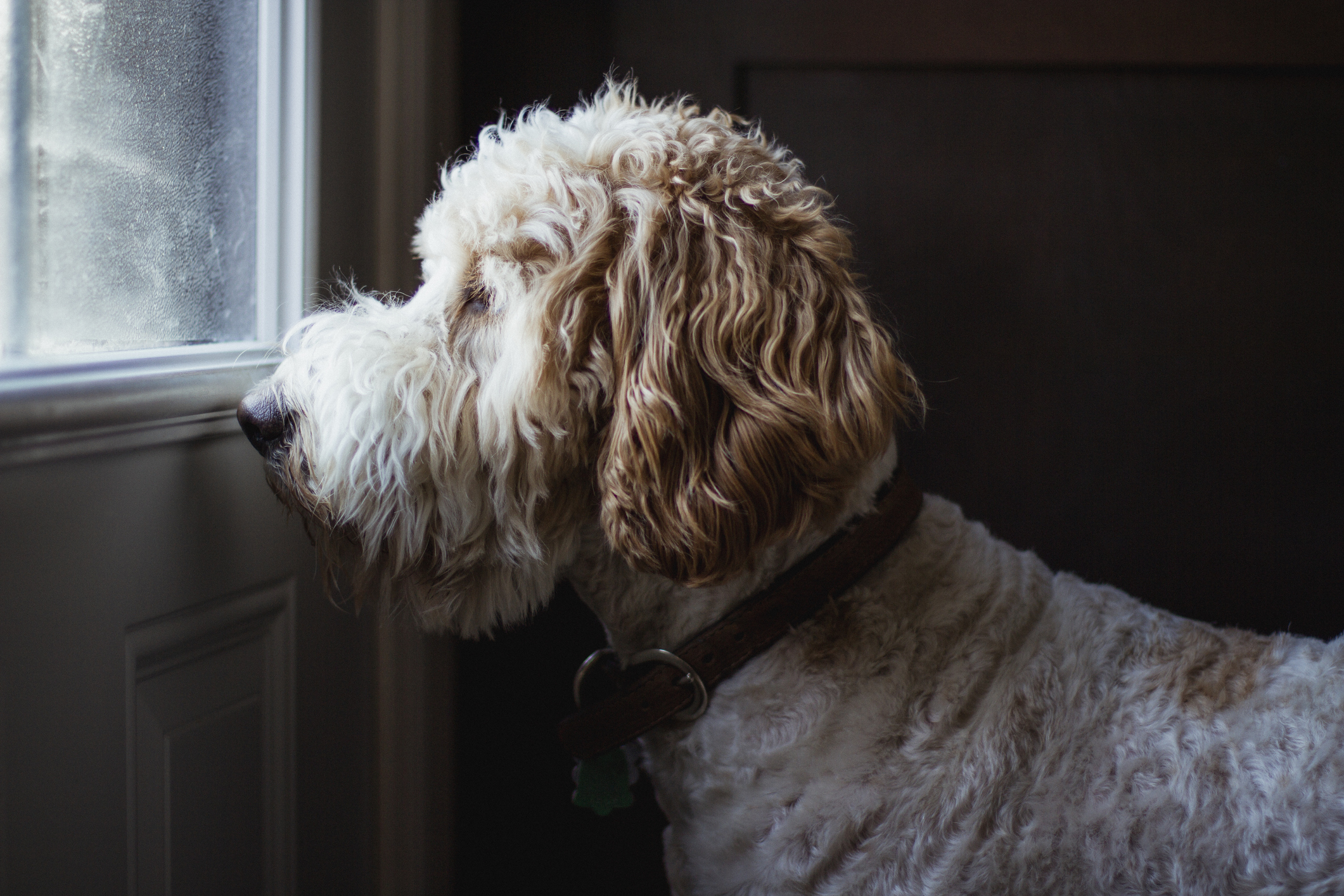
Help Your Pet Adjust to the End of Stay-at-Home Orders
To slow the spread of the pandemic, much of the world has been encouraged or required to stay home for the majority of their time. For weeks on end, individuals and families have been working and doing school from their homes—and pets have grown accustomed to this.
With their owners at home much more than usual, some pets have already experienced stress or anxiety as a result of abrupt changes in routine. But now that some areas are relaxing social distancing guidelines and people are preparing to return to work, pets will be faced with yet another drastic change. The owners they’ve grown accustomed to having around all day, every day, will soon be gone for hours on end.
While some pets will adapt to these changes much more easily, others might struggle with the transition. Experts fear that separation anxiety will reach an all-time high in pets, as their owners “abandon them” for the duration of the workday.
Separation anxiety in pets might look like:
- Barking, howling, whining or crying when you prepare to leave and for extended periods of time after you leave
- Scratching at doors and windows and/or attempting to escape
- Destruction of household items, including furniture, clothing and décor, that only occurs when the pet is left alone
- Inappropriate urination or defecation
- Overgrooming to the point of hair loss and skin injuries
- General changes in appetite and behavior

To spare our pets from even more unnecessary stress, owners can start taking steps now to prepare furry friends for the transition and minimize the risk of separation anxiety.
Start your transition process early
The best thing pet owners can do for their furry friends during this time is get them used to being alone in the home again. However, this transition should be part of an extended process—not an abrupt change. Because both cats and dogs are averse to sudden changes in routine, you’ll want to extend this transition process over a longer period of time—meaning, it’s best to start now.
- Re-introduce their safe space: It’s likely your pet had a safe space where they’d nap or play while you were gone. This might have been a bedroom, a bed in the living room or even a crate. With you being home more, it’s possible that they’ve abandoned this spot to be around you. Spruce up this space with new blankets or toys and make sure it’s inviting for your pet to return to. However, don’t force them to stay in this spot when you leave unless that was the case before.
- Make small adjustments to their daily routines: If your quarantine schedule has led you to feed, walk or play with your pets at a time that won’t be conducive to your return to work, start making gradual adjustments now. Feed them 10-15 minutes earlier each day until you reach your ideal feeding time. Do the same for daily walks or park visits. Make sure you’re still building in time to play and love on your pet, especially in your “off” hours.
- Provide extra enrichment: Consider adding a new toy to your pet’s collection that will keep them busy while you’re away. Cats might love an automated laser toy they can chase all day. Dog might be intrigued by puzzle toys that make noise. Both pets are sure to love toys that dispense treats or food when they’re played with.
- Start a gradual out-of-the-home process: Practice leaving your home for small periods of time each day, gradually increasing the length of time you’re away. You might start by taking a short drive, then stay out longer the next day to go grocery shopping. Little by little, stay out longer or leave multiple times during the day. This gives your pet the opportunity to adjust to your absence in a slower manner. It may help to leave the radio or a TV on while you’re gone, so your home isn’t completely quiet after weeks of activity.
- Monitor and reward behavior: Make sure you’re monitoring your pet’s behavior during this process. If leaving for a short trip causes them to bark or be destructive, you’ll need to take it much slower. But if your pet appears calm and happy as you extend your trips, keep the process going. When you return for your trips, give your pet treats or other rewards for good behavior. This reinforces your pet’s calm demeanor in your absence and gives them something to look forward to when you’re gone.
- Solidify routines: Once you’ve had a chance to test longer and longer trips out of the home, continue to leave once in a while to help your pet remember that it’s okay if you’re gone. Continue adjusting your pet’s routines until they are at an appropriate time that you can manage when you do return to work, then maintain them.
- Continue the transition after quarantine: When you finally do return to work, still try to maintain the adjustment period for a week or two. Your pet may be calm when you’re gone for a few hours, but an eight-hour workday might cause distress. Try to return home on your lunch break to remind them you still love them!
Giving our pets time to adjust, yet again, to a new routine can minimize their stress and prevent negative behaviors from settling in. By remaining patient and giving your pet lots of TLC, you’ll both be able to manage post-quarantine transitions in a healthy and safe way.


